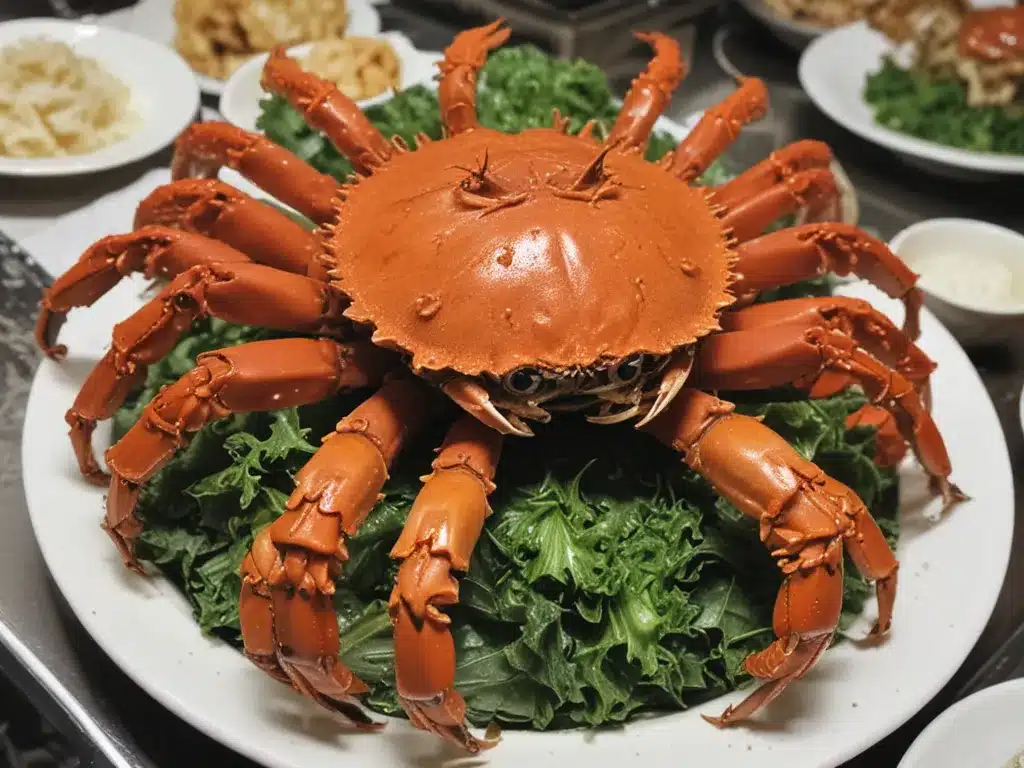
What are Hairy Crabs?
Hairy crabs (Eriocheir sinensis), also known as Shanghai river crabs, are a species of crab found in the lower reaches of the Yangtze River and its tributaries in China. They have slender claw-like legs covered in fine hairs, hence the name “hairy”. During the autumn season from October to December, male hairy crabs migrate downstream to the East China Sea to spawn, while the female crabs remain in the rivers. This migration period is when the crabs are harvested for consumption.
Hairy crabs are considered a delicacy in Shanghai and the surrounding regions. Their peak season is short, only lasting around 2 months from October to early December. During this time, locals and tourists flock to Shanghai to enjoy fresh hairy crabs cooked in various styles. The male crabs are preferred for eating as they are sweeter compared to females who are larger in size.
How are Hairy Crabs Prepared and Cooked?
There are a few popular ways that hairy crabs are cooked in Shanghai. One of the simplest methods is boiling the live crabs in water until they turn red, usually taking 5 to 10 minutes. This helps to remove any mud or sand trapped in their shells and brings out their sweet flavor.
Another classic Shanghai cooking style is dongbei huoguo, which means “northeastern pot cooking”. Live crabs are simmered gently in a pot with aromatics like ginger, spring onions, wine and soy sauce. This infuses the crab meat with rich flavors.
For those who want to savor the crab meat without getting their hands messy, there is also the option of buying cooked and cleaned crab roe (xie rou). The brown roe is extracted from the body and seasoned before serving.
No matter how they are cooked, hairy crabs are traditionally eaten by hand at the table. Their shells are easily cracked open to revel the sweet white crab meat inside. The roe and tomalley (crab liver) are also delicacies that should not be missed.
A Typical Hairy Crab Feast in Shanghai
During crab season, it is a common sight to see groups of friends and families gathering around tables covered with newspapers to enjoy hairy crabs together. Other than just boiled or steamed crabs, a proper hairy crab feast usually includes:
-
Crab soups – Clear soups made from extracting maximum flavor from crab shells are light yet full of taste.
-
Seasoned garnish – Finely chopped ginger, spring onions and vinegar are essential condiments to dip the crab meat in for extra fragrance and zing.
-
Beer – Chinese rice wine or light lagers like Tsingtao beer are preferred beverages to cleanse the palate between crab servings.
-
XO sauce – This luxurious condiment crafted from dried seafood adds umami depth to the feast.
-
Dessert – Fresh fruits like pomelos are a light yet refreshing way to conclude the meal.
Having hairy crabs communally with friends and family is part of the enjoyment in Shanghai. Laughter and chatter fills the air as everyone digs in, relishing this seasonal delicacy that is only around for a short while each year. The experience of a hairy crab feast is truly worth savoring.
Preserving the Hairy Crab Population
With increasing demand over the years, there are concerns about overfishing and impacts on the hairy crab population in the Yangtze River. Fishery authorities have imposed harvest quotas and closed seasons to allow the crabs to spawn and replenish numbers.
Aquaculture of hairy crabs is also being practiced more widely. By cultivating crabs in controlled ponds and monitoring water quality, it aims to supplement wild catches and ensure a sustainable supply. Some restaurants have also started promoting non-seasonal crab dishes prepared with farmed crabs to satisfy cravings outside of the peak months.
Overall, with collective efforts in responsible fishing practices and aquaculture advancements, it seems the future of enjoying hairy crabs as a Shanghai delicacy remains promising. Education about conservation and humane harvesting methods are also crucial to pass on this gastronomic tradition to future generations.






